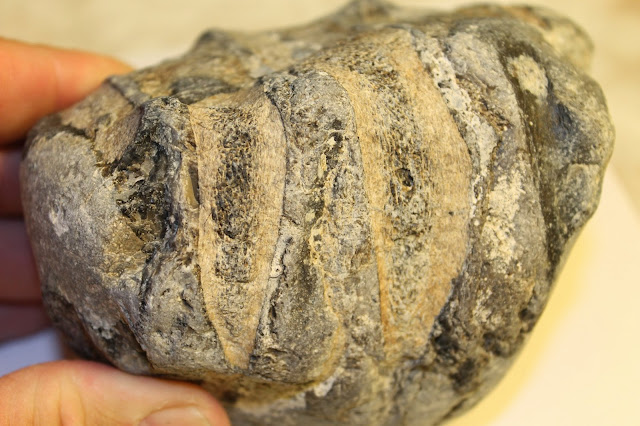 |
| Balanced-rock monument |
 |
| My search area looked like this. |
 |
| The rocks generally looked like this. |
 |
| This specimen appears to capture a turbidity zone on the ocean bottom which might have been a submarine landslide. |
 |
| Calcite nodule/geode. |
 |
| Generic petrified whale bone specimens. |
 |
| Petrified whale bone vertebra. |
 |
| Heavily silicated petrified whale bone vertebra. |
 | |
| Closer view of whale bone vertebra. |
 |
| Even closer view of same vertebra: note bone cell structure. |
 |
| Petrified whale bone in matrix. |
 |
| Odd-looking petrified whale bones in matrix are cervical vertebra. |
 |
| Different view of previous specimen with alternating layers of bone. |
 |
| Large, well-preserved petrified whale bone vertebra with both disks attached. |
 |
| Close-up of silicated fossilized coral. |
 |
| Petrified drift wood encased in worm-eaten concretion. All photos by Kim Patrick Noyes (all rights reserved) |

Very cool. How do you display your whale bone?
ReplyDeleteJodi,
DeleteThanks for taking the time to check out the images and I'm glad you enjoyed them.
Most of my mineral and fossil collection is stored in flat boxes or trunks as I currently live in too small a space to have room for display cabinets and the like I do keep a handful of my best specimens on my bookshelves blended in with my books. The specimens in these images are currently sitting outside in my backyard on the pavement but will be moved into some sort of storage bin. I might grab two or three and keep them inside on display.